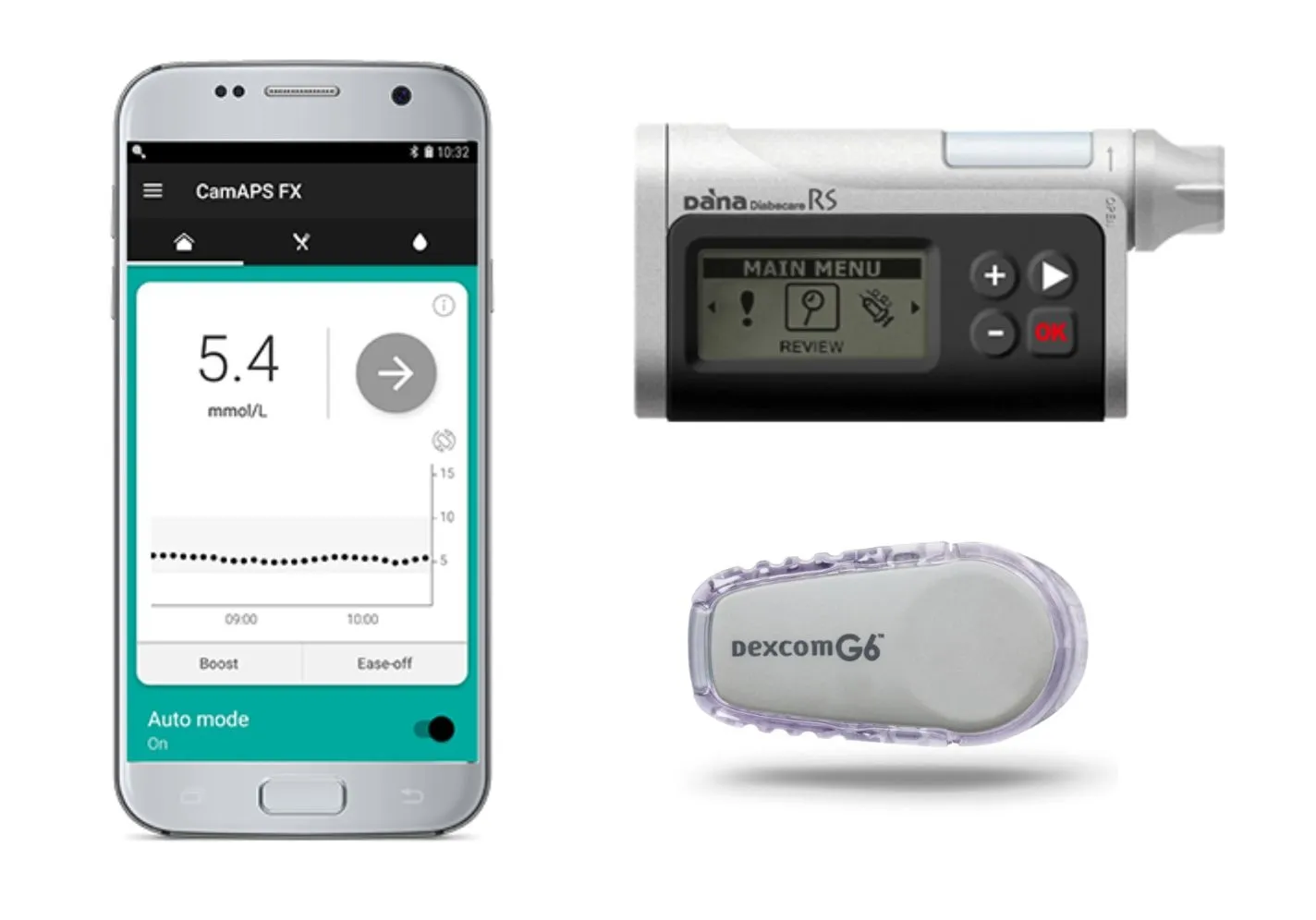Used in patients with type 1 diabetes, it is the first time that it is used successfully in type 2 in a non -hospitable environment.
The device administers the insulin necessary to control glucose automatically.
US scientists have successfully tested an artificial pancreas for patients with type 2 diabetes. The device, driven by an algorithm developed at the University of Cambridge, doubled the amount of time that patients maintained their blood sugar levels (glucose) in correct values compared to the standard treatment, in addition, it reduced in half the time they had peaks at their high glucose levels.
The study is novel, explains Jorge Bondia, from the University of Valencia and a member of the group of technologies applied to diabetes of the Spanish Diabetes Society (SED), «already to which it is a thing that is done in type 1 diabetes but that, although it has been done in type 2, not in the context of study outside the hospital.They had done in hospitalized or dialysis patients, but one thing is when the patient is hospitalized that for a few days the system is put to control glycemia and another is that he continues, at home, in his usual life.These are very different contexts »
It is estimated that around 415 million people worldwide live with type 2 diabetes. In Spain it affects almost 6 million people.The data collected by national and European health surveys reflect a rate of 7.51 out of every 100 people.of which 90% have type 2 diabetes.
Type 2 diabetes makes glucose levels too high.In general, blood sugar levels are controlled by insulin release, but in type 2 diabetes is interrupted insulin production.Over time, this can cause serious problems, such as damage to eyes, kidneys and nerves, and heart disease.
The disease is generally handled through a combination of changes in lifestyle (better diet and more exercise, for example) and medications, with the aim of keeping glucose levels low.
The new device developed by researchers at the WellCome-MRC Institute of Metabolic Sciences at the University of Cambridge can help maintain healthy glucose levels.The device combines a standard glucose monitor and an insulin pump with an application developed by the equipment, known as HX camps.This application works with an algorithm that predicts how much insulin is required to maintain glucose levels in the target range.
The researchers had previously demonstrated that an artificial pancreas executed by a similar algorithm is effective for patients living with type 1 diabetes, from adults to very young children.They had also successfully tested the device in patients with type 2 diabetes that require renal dialysis.
«The artificial pancreas automates a process that is now done more manually;That is, the type 2 patient controls his insulin by clicking on the finger to measure the value of insulin and, if he needs, he is injected, ”says Bondia.
The study that is published today in "Nature Medicine" implies the first test of the artificial pancreas in a broader population that lives with type 2 diabetes (which does not require renal dialysis).
Unlike the artificial pancreas used for type 1 diabetes, researchers explain, this new version is a completely closed circuit system, while patients with type 1 diabetes need to tell their artificial pancreas that they are about to eat to allow theInsulin adjustment, for example.In this version.They can let the device work totally automatically.
A total of 26 patientsThey participated in the study.Each was randomly assigned to one of two groups: the first would try the artificial pancreas for eight weeks and then change to the standard therapy of multiple daily insulin injections;The second would begin this control therapy and then change the artificial pancreas after eight weeks.
«This system, Bondia stands out, manages the necessary insulin every 5 minutes.You do not need previous information.Release the patient from controlling hydrates or having to be thinking how much insulin needs, which is a very large load for the patient.All that does the system automatically what is a relief for the patient ».
The study is the first test of the artificial pancreas in a broader population that lives with type 2 diabetes
To evaluate the effectiveness of the device, the researchers applied different measures.For example, the proportion of time that patients passed with their glucose levels within an objective range of between 3.9 and 10.0 mmol/l.On average, the people who used the artificial pancreas passed two thirds (66 %) of their time within the target range, twice what was achieved while they were in control (32 %).
A second assessment criteria was the proportion of past time with glucose levels above 10.0 mmol/l.Over time, high glucose levels increase the risk of potentially serious complications.Patients who followed control therapy passed two thirds (67 %) of their time with high glucose levels;This was reduced by half to 33 % when artificial pancreas was used.
In addition, the researchers saw that the average levels of glucose fell: 12.6 mmol/l when taking control therapy at 9.2 mmol/l when using the artificial pancreas.
But the most important thing for the Spanish expert is that better control is achieved.Bondia explains that the goal is for glucose to be between 70 and 180 as long as possible.«If it is below the range is what is called hypoglycemia, which is serious because it has consequences that even if you do not treat it you can die you can, but if you are also above the range, these complications are carried out.But when eating, it is normal for insulin to rise.But with this system it is possible to increase control and reduce hypoglycemia by half.The objective would be up to one hundred percent of time in rank, which is impossible, this expert recognizes ».
Likewise, the device also reduced the levels of a molecule known as glycosylated hemoglobin or HBA1C.
Glycosylated hemoglobin develops when hemoglobin, a protein inside the red blood cells that transports oxygen throughout the body, binds to blood glucose and becomes "glucose," they explain.When measuring HBA1C, doctors can obtain a general image of what the average level of blood sugar have been for a period of weeks or months.For people with diabetes, the higher the HBA1C, the greater the risk of developing complications related to diabetes.After control therapy, the average HBA1C levels were 8.7 %, while after using the artificial pancreas they were 7.3 %.
Bondía concludes that this would be the ideal treatment."The goal is automatic systems."
But remember that the patient is not accustomed to technology.«It is one of the barriers to be overdiabetes".
Another aspect to consider would be the cost.An artificial pancreas is much more expensive, we are talking about several thousand euros for eachdevice.





